
The Potez 37 was a two-seat, long range reconnaissance aircraft built to compete for a French government contract. It flew in mid-1930 but did not win the competition, so only two were completed.
The Caudron C.220 was a two-seat French biplane trainer. Only two were built, using different engines.
The Dupuy D-40 was a French built, low powered monoplane designed for touring abroad. The only example was used for an uncompleted journey to Saigon.
The Potez 51 was a 1930s French intermediate trainer, intended to replace the ageing Potez 25 which had sold worldwide. It did not go into production.
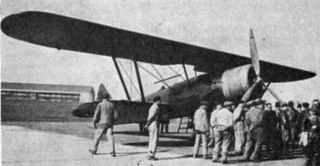
The Potez 50 or Potez 50 A2 was a French two seat military multi-rôle aircraft, first flown in 1931. It did not go into service but seven variants using five different engines were produced, one of them setting several speed with useful load records and another, the Potez 506, setting three altitude world records.

The Weymann-Lepère WEL-80 R.2 was a French two seat reconnaissance aircraft built to compete for a 1928 government contract. It was not successful and did not enter production.

The Dewoitine D.480 was a French single engine side-by-side sports and training aircraft built in the early 1930s. Two were completed and flew with several different radial engines. One remained active through the 1950s.
The Kellner-Béchereau 23 was a French two seat cabin touring aircraft, built in 1932. Its wing was constructed in a novel way. Only one was completed.

The Nieuport-Delage NiD 740 was a French trimotor monoplane designed to carry night mail. Two were built in 1930.
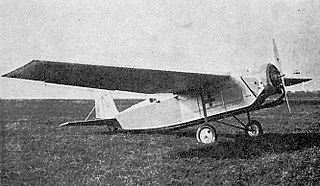
The Guillemin JG.40 was designed and built to meet a French government requirement for a small air ambulance capable of operating in the colonies. Two were completed and performed well but the JG.40 did not reach production.
The Potez 42 was designed and built in 1930 to meet a French government requirement for a small air ambulance capable of operating in the colonies. It did not reach production.
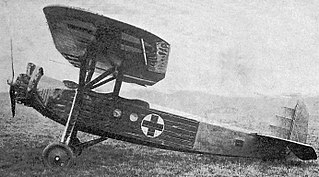
The Lorraine-Hanriot LH.21S was designed and built in 1930 to meet a French government requirement for a small air ambulance capable of operating in the colonies. It did not reach production.

The Guillemin JG.10 or Blériot-Guillemin JG.10 was a French two seat touring aircraft, designed to be as simple and safe to fly and maintain as a car, with similar facilities, as well as provision for parachutes.

The Mauboussin M.112, M-12 or Mauboussin M.XII was originally called the Peyret-Mauboussin PM XII and was renamed when Mauboussin founded his own company in 1931, ending his partnership with Louis Peyret. It was a French, single-engine, two-seat, low cantilever wing touring monoplane. At least six were built.

The Hanriot H.25 was a French, single-engined, six passenger airliner built in 1926. Only one was flown.
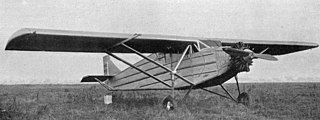
The Aviaméta 92 was a French, all-metal, five seat monoplane built in the late 1920s. Three different engines were fitted, and one example flew the first non-stop Paris-Algiers flight in preparation for an abandoned trans-Atlantic attempt.
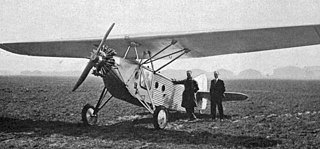
The Hanriot H.46 Styx was a French, single-engined, parasol wing aircraft which could equally be configured for training, liaison or ambulance roles; in the latter form it was able to accept a patient on a stretcher. Several different engines were fitted and flown but the type did not reach production.

The Raab-Katzenstein RK.9 Grasmücke (Hedge-sparrow) was a 1920s German two-seat touring, advertising and training biplane. It was one of many designs from several countries aiming to provide low cost flying and was quite successful, with about twenty built.

The Bourgois-Sénémaud AT was a parasol wing, two seat touring aircraft built in France in 1928. Three examples were completed.

The Albert A-10 was a four-seat French transport aircraft which could be rapidly converted into an air ambulance. Two or three examples were built between 1929 and 1932, using at least two different engines, but neither variant reached production.















